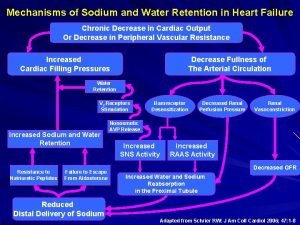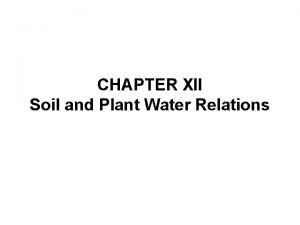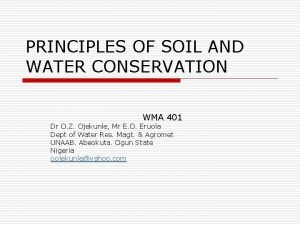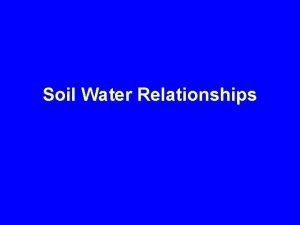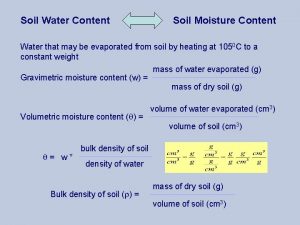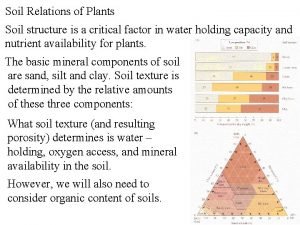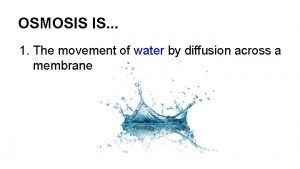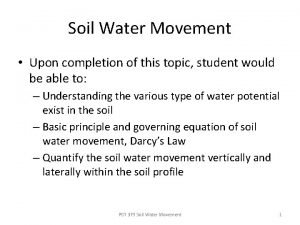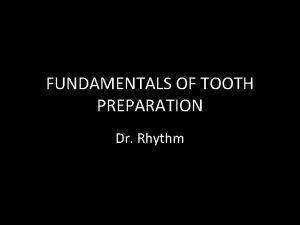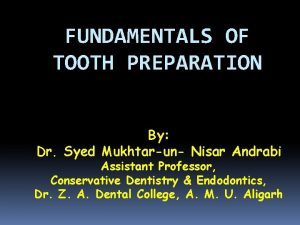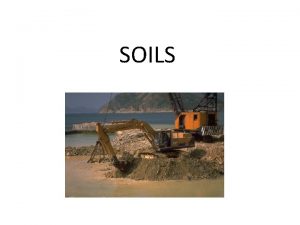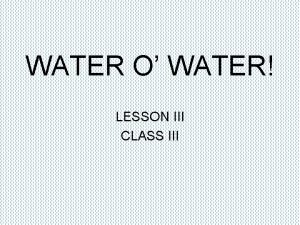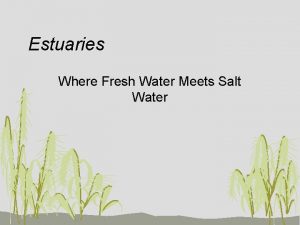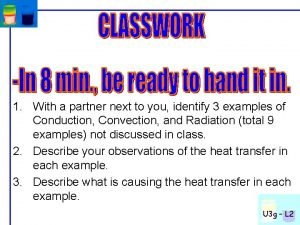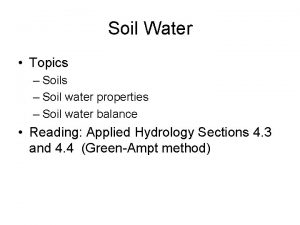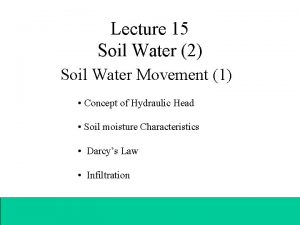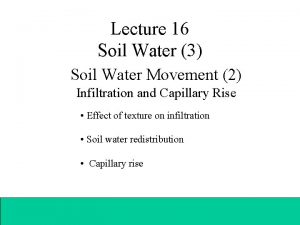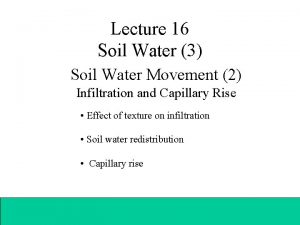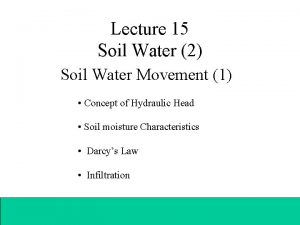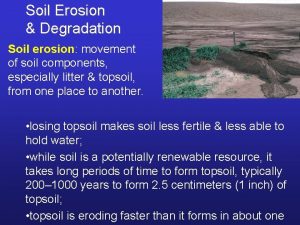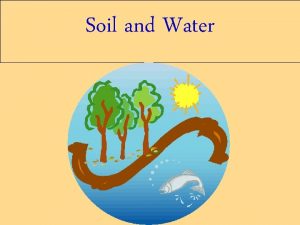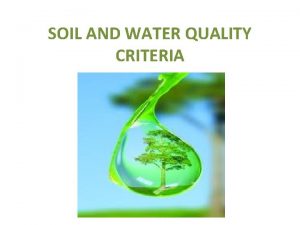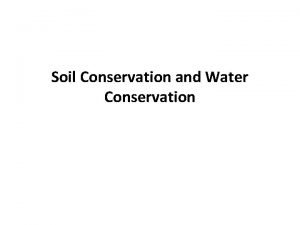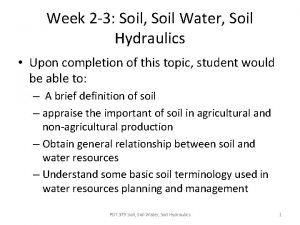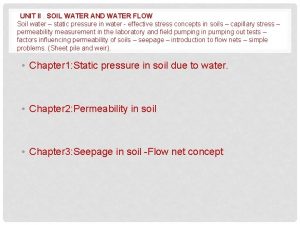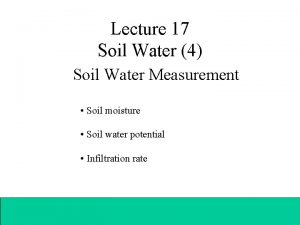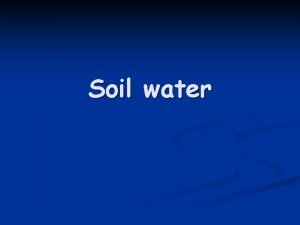Soil Water Movement and Retention Functions of Soil




























































- Slides: 60

Soil Water Movement and Retention

Functions of Soil Medium for plant growth Regulator of water supplies Recycler of raw materials Habitat for soil organisms Engineering medium

Functions of Soil Medium for plant growth Physical Support Gas exchange Water Temperature Nutrient source

Functions of Soil Regulator of water supplies Infiltration Run-off Storage/Movement Distribution Purification Integral to hydrologic cycle

Water Movement


Two Forces Responsible for Water Movement in Soils Gravity Capillarity

Gravity

Capillarity Spontaneous movement of water into and through pore spaces in soil without the aid of gravity.

Adhesion and Cohesion

Cohesion

Adhesion and Cohesion adhesion H cohesion oxygen H H S U R F A C E

Adhesion and Cohesion droplet adhesion Cohesion (H-bonding) Surface

Adhesion and Cohesion Strong adhesion Weak adhesion

Weak Adhesion

Adhesion to Soil Particles Strong Adhesive Forces

Soil Pores Adhesion and Cohesion capillarity Adhesion to the tube or pore wall Cohesion between water molecules

Capillarity h = 0. 15 r Tube/Pore wall adhesion } Force down cohesion

Capillarity h = 0. 15 r Small pores h


Capillarity

Soil Pores and Pore Size Distribution Texture Density Structure

Texture Particle Size Large/coarse Sand Loamy Sandy Loam Silt Pore Size Capillarity Large/Macro Weak Medium Fine/Small Sandy clay Loam Silt Loam Clay Loam Sandy Clay Silty Clay Meso/Medium Micro/Small Moderate Strong

Soil Pores Sandy Silty Clayey

Capillarity Dominated Gravity Dominated

Density Depth in Profile Arrangement of Particles Compaction

Structure Macropores Micropores

Examples

Sand Water Clay

Initial Saturation Sand Clay

Initial Saturation Sandy Loam Uncompacted Compacted

Aggregates

Same Texture and Density Wet Moist

transpiration Relevance water

Quantification: Soil Water Energy

Potential Energy waiting to be used or exploited

Gravitational Potential Energy Water moves in response to differences in potential energy, from high potential energy to low potential energy. High potential Energy The greater the difference in height The greater the difference in Gravitational potential energy. Low potential Energy

Gravitational Potential ψg The potential energy of a unit quantity of water. Unit quantities: volume mass weight = mg Ψg = mgh Ψg = h (cm) mg The greater the height, the greater the potential energy.

Gravitational Potential Independent of soil properties Height (cm) 100 a ψga = 100 cm 50 40 ψgb = 40 cm b soil Ψg = 0 Reference level Difference in energy determines movement

Gravitational Potential Ψga = 60 cm Height (cm) 100 a 40 0 b Ψgb = 0 cm Reference level (Ψg = 0) Ψga – Ψgb 60 - 0 = 60 cm

Gravitational Potential 1. Gravitational potential energy is due only to the height of an object (water) above some reference point. 2. Gravitational potential energy is independent of soil properties.

Capillary Potential Energy (Matric Potential Energy)

Matric Potential “suction” potential - capillarity Narrow capillary tube – high capillary rise h = 0. 15 - strong force r - compared to free water Small particles, small pores Applies to unsaturated soils

Primary Factors in Matric Potential Texture, Density, Aggregation Pore Size Distribution Moisture Content Which Pores are Filled

Capillarity and Soil Texture Small pores Strong suction Strong capillarity Large pores Weak suction Weak capillarity

Capillary Potential Energy water Dry soil Suction potential energy Matric potential energy

Capillary Potential Porous block Suction (capillarity) Ψm = -100 cm (suction) 100 cm Dry soil Vertical distance between the surface of the water and the porous cup.

Soil Texture Sandy Soil Porous block suction 1000 cm ψm = -1000 cm (suction) Dry soil Vertical distance between the surface of the water and the porous cup.

Soil Texture Fine-textured soil suction Ψm = -10, 000 cm (suction) 10, 000 cm Dry soil Vertical distance between the surface of the water and the porous cup.

Soil Texture suction Clay suction Sand Unsaturated soils have negative matric potential energy

Submergence Potential

Submergence Potential (ψs) Equal to the distance below a free water surface Water Table 10 cm

Units of Potential Centimeters of water Bars Pascals 1 bar = 1020 cm water (4 o. C) 1 KPa = 10 cm water 1 bar = 100 k. Pa

Total Potential Energy is the sum of the gravitational, submergence, and matric potential energies. Ψg + ψ m + ψ s = ψ T

Gravitational Potential + Matric Potential = Total Potential Height (cm) 50 a Ψm = -65 cm Ψg = 50 cm ΨT = -15 cm 20 10 Ψg = 0 Reference level

Gravitational Potential + Matric Potential = Total Potential Height (cm) 50 a Ψm = -65 cm Ψg = 50 cm ΨT = -15 cm 20 10 b Ψm = -5 cm Ψg = 10 cm ΨT = 5 cm Ψg = 0 Reference level

Energy Differences Height (cm) 50 a ΨTa = -15 cm 20 10 b ΨTb = 5 cm Ψg = 0 Reference level ΨTa – ΨTb = (-15 cm) - 5 cm = -20 cm

Which way will water move? Height (cm) 50 a ΨTa = -15 cm 20 10 b ΨTb = 5 cm Ψg = 0 Reference level ΨTa – ΨTb = (-15 cm) - 5 cm = -20 cm

Determining the Direction of Water Flow 1. Sum the individual potentials at each point 2. Determine if there is a difference in potential 3. Water will move from the higher to the lower energy 4. Point A – Point B 5. Water moves from high to low energy Positive Point A to Point B Negative Point B to Point A

Next: Characterizing Water Status
 Water and water and water water
Water and water and water water Water retention in soil
Water retention in soil Pathophysiology of sodium and water retention
Pathophysiology of sodium and water retention What is a non movement area
What is a non movement area Living soil vs dead soil
Living soil vs dead soil Living soil vs dead soil
Living soil vs dead soil Types of axial movement
Types of axial movement Soil and water relationship
Soil and water relationship Principles of soil and water conservation
Principles of soil and water conservation Agronomic measures of soil and water conservation
Agronomic measures of soil and water conservation Texas soil and water conservation
Texas soil and water conservation Absorption and movement of water in root cells
Absorption and movement of water in root cells Hfojobs
Hfojobs How is soil made
How is soil made Soil infiltration rate
Soil infiltration rate Water content of soil
Water content of soil Soil texture water holding capacity
Soil texture water holding capacity Freshwater wetlands purify water by
Freshwater wetlands purify water by Difference between ecology and environment
Difference between ecology and environment Water erosion and deposition
Water erosion and deposition Velocity of water in a pipe
Velocity of water in a pipe Water movement in xylem
Water movement in xylem What is osmosis
What is osmosis Water movement
Water movement I can evaluate functions
I can evaluate functions Evaluating functions and operations on functions
Evaluating functions and operations on functions Tpc kapal adalah
Tpc kapal adalah Insulin and sodium retention
Insulin and sodium retention Ferris orientation
Ferris orientation Primary retention
Primary retention Resistance form in cavity preparation
Resistance form in cavity preparation Primary retention form features
Primary retention form features Microsoft exchange 2010 email archiving
Microsoft exchange 2010 email archiving How to build customer satisfaction value and retention
How to build customer satisfaction value and retention Building a recruitment and retention plan
Building a recruitment and retention plan Service and follow up for customer retention
Service and follow up for customer retention Retention period of finished product
Retention period of finished product Induction in hrm
Induction in hrm Retention and disposal of gmp documents
Retention and disposal of gmp documents Employee separation and retention management
Employee separation and retention management Retention stability support
Retention stability support Searchexposure
Searchexposure Business retention and expansion survey
Business retention and expansion survey Arc of displacement in fpd
Arc of displacement in fpd Managing careers and retention
Managing careers and retention Retention and drainage
Retention and drainage Retention and drainage
Retention and drainage Building customer satisfaction value and retention
Building customer satisfaction value and retention Building and delivering customer value and satisfaction
Building and delivering customer value and satisfaction Onboarding portal upmc
Onboarding portal upmc Driver recruitment strategies
Driver recruitment strategies What works student retention and success
What works student retention and success Customer satisfaction value and retention
Customer satisfaction value and retention Absolute value piecewise function
Absolute value piecewise function Water consumption water meter reading worksheet
Water consumption water meter reading worksheet Water o water
Water o water 5 divided by 1/4
5 divided by 1/4 Class 8 english chapter 7 water water everywhere
Class 8 english chapter 7 water water everywhere Water exchanger
Water exchanger Fresh water meets salt water
Fresh water meets salt water Warm water rises in a lake. cold water descends.
Warm water rises in a lake. cold water descends.


